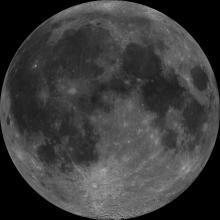Nearside of Earth's Moon as Seen by the Clementine Spacecraft
ID#:
NASA-PIA00302Source:
NASA/JPL/USGSCopyright:
NASA Jet Propulsion LaboratoryRights Usage:
Contact NASA Jet Propulsion LaboratoryTerms of Use:
Smithsonian Terms of Use
Stay up to date on the latest stories and events with our newsletter
National Air and Space Museum
National Air and Space Museum
Steven F. Udvar-Hazy Center
Steven F. Udvar-Hazy Center
Open daily
10:00 am - 5:30 pm

